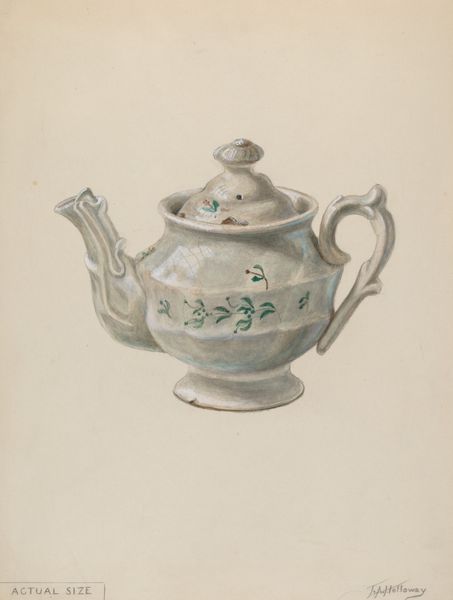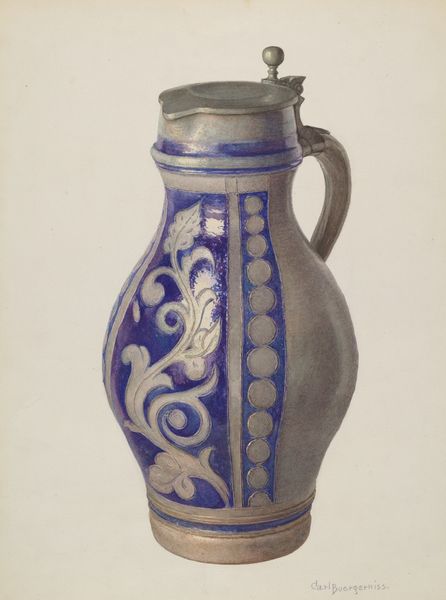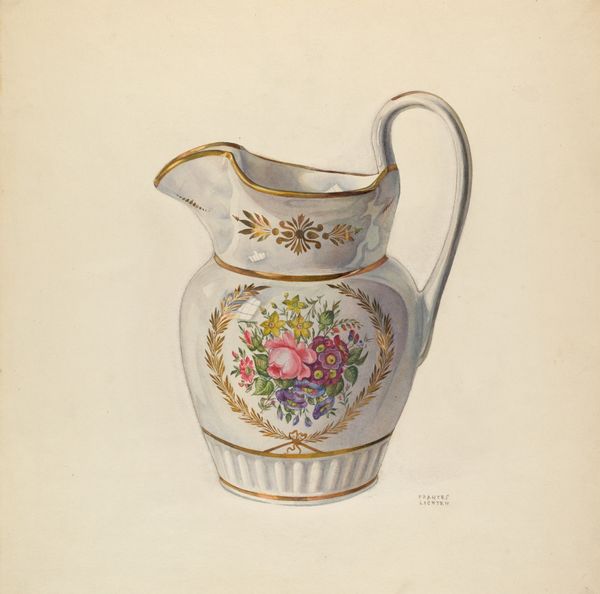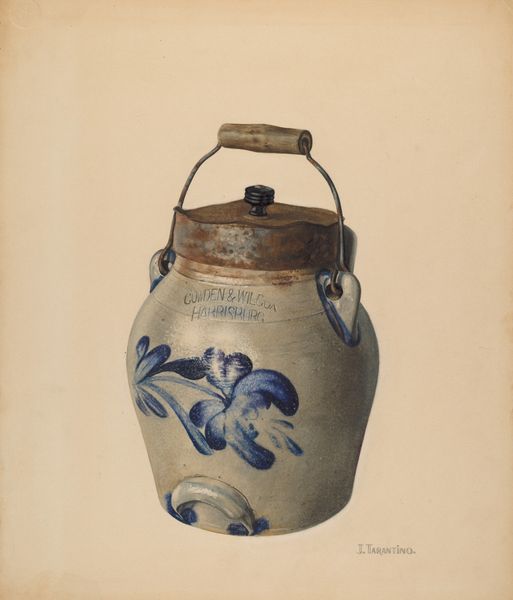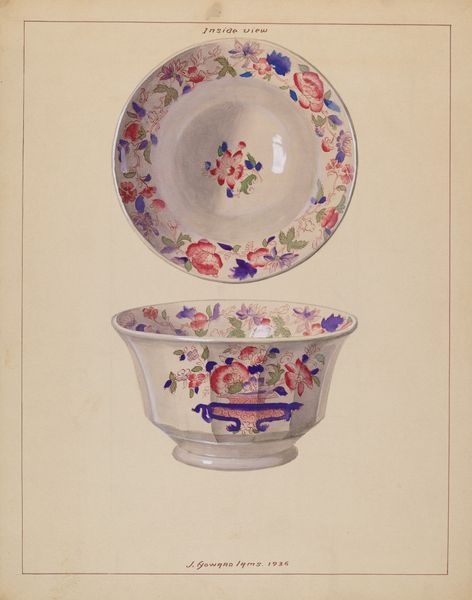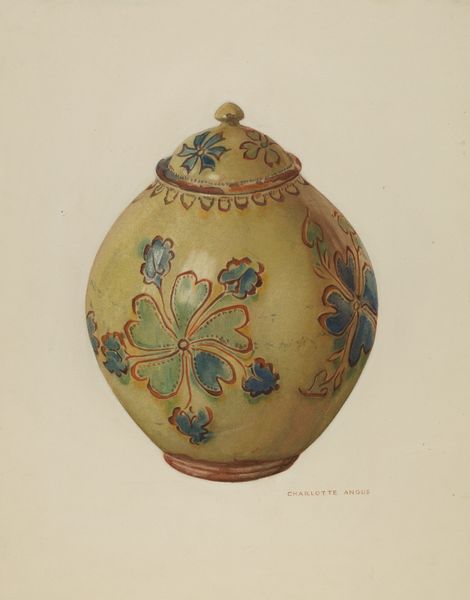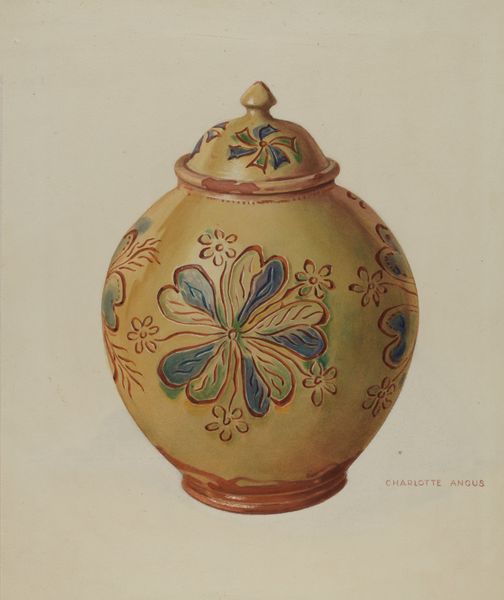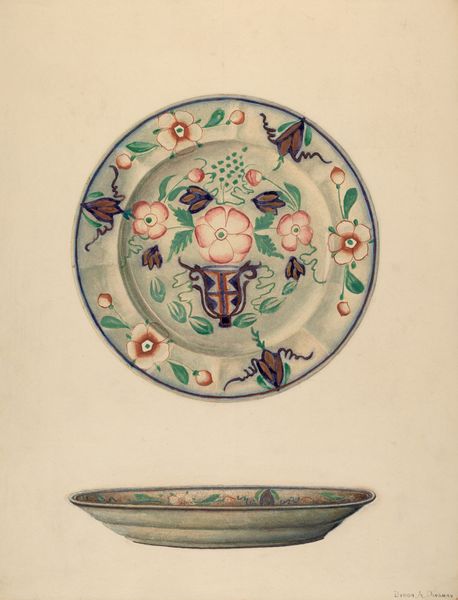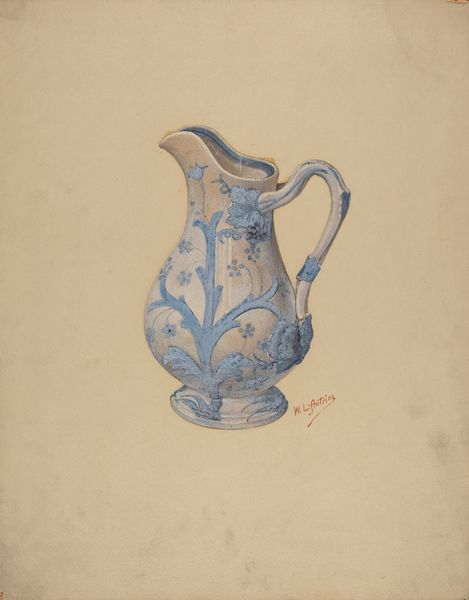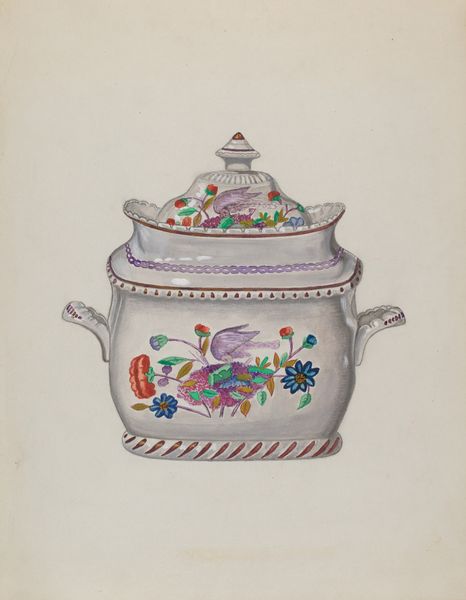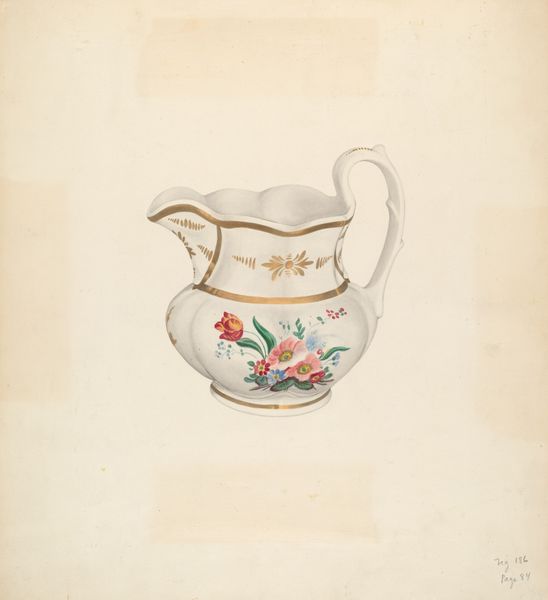
ceramic, earthenware
#
ceramic
#
earthenware
#
ceramic
Dimensions: 7 x 6 in. (17.8 x 15.2 cm)
Copyright: Public Domain
Editor: We're looking at a ceramic earthenware teapot crafted by Karl L.H. Müller between 1873 and 1876. It's currently housed in the Metropolitan Museum of Art. It strikes me as…whimsical, almost fairytale-like, with the little figures adorning it. What is your take on it? Curator: Whimsical is a good word for it. I see it as a reflection of the Victorian era’s fascination with nature and the exotic. This wasn't just about aesthetics, but also about social status. Owning such intricately decorated pieces displayed wealth and refined taste. Do you notice the figure on the lid and the animalistic supports for the feet? Editor: Yes, it looks like a woman and what looks like squirrels as part of the handle. It makes you wonder what a tea party in those days would be like! Curator: Precisely! But more than a tea party piece, objects like this often fueled orientalist fantasies. Think about how global trade during this period exposed people to new cultures, often interpreted through a colonial lens. The teapot became a symbol of this encounter, shaped by the power dynamics of the time. What might seem decorative or whimsical becomes something a bit darker under scrutiny. Editor: So, it’s not *just* a pretty teapot? Curator: Not at all. Its existence speaks to the socio-political climate of the late 19th century, highlighting the power structures inherent in the collection and display of exoticized goods. It represents a very particular world view, doesn’t it? Editor: Definitely. I’ll never look at a fancy teapot the same way again! Thank you for opening my eyes! Curator: My pleasure! Analyzing even everyday objects with a historical perspective can reveal so much.
Comments
No comments
Be the first to comment and join the conversation on the ultimate creative platform.

